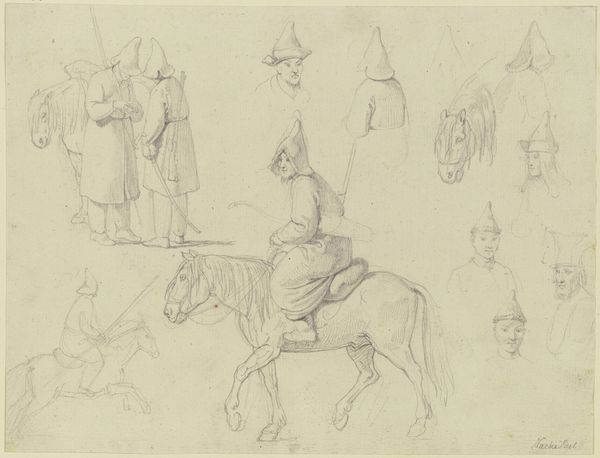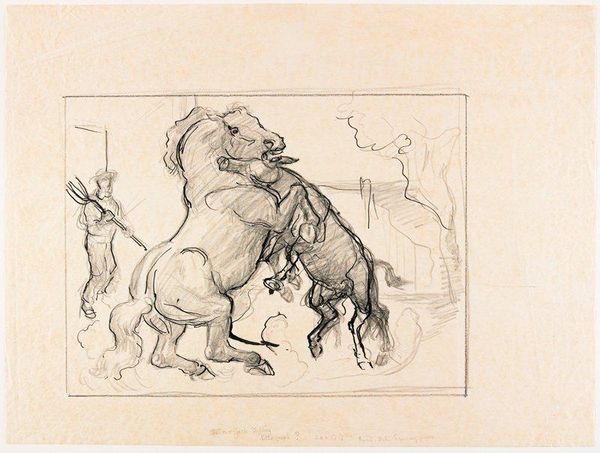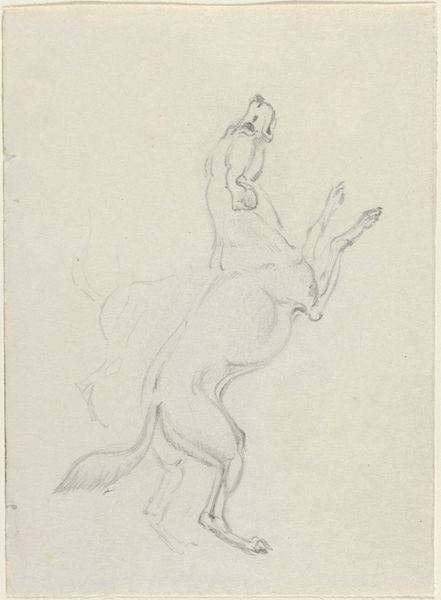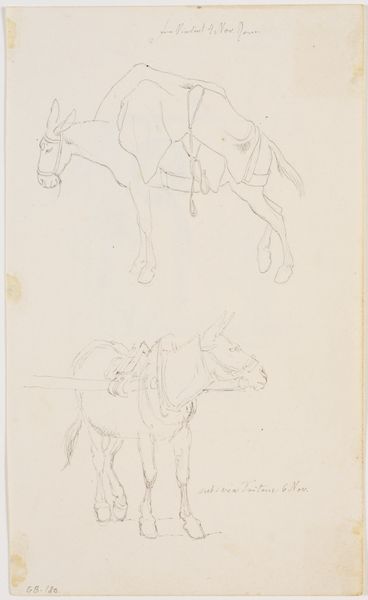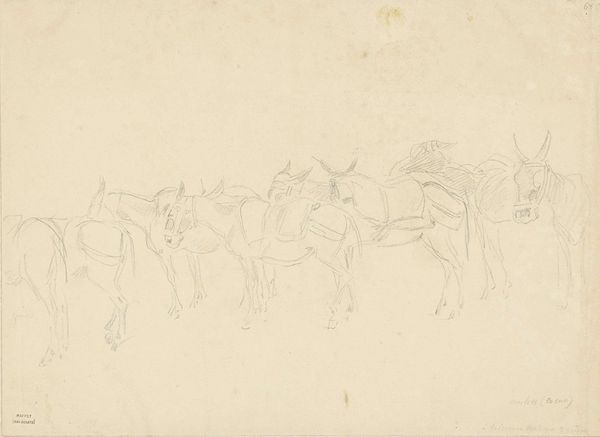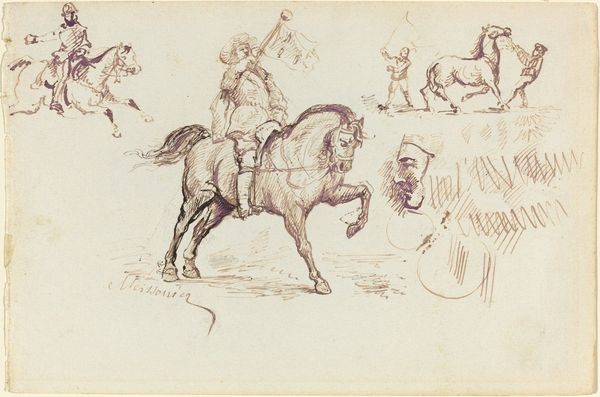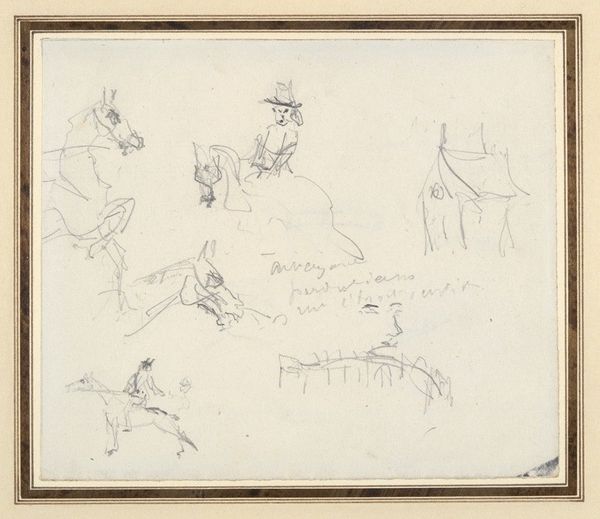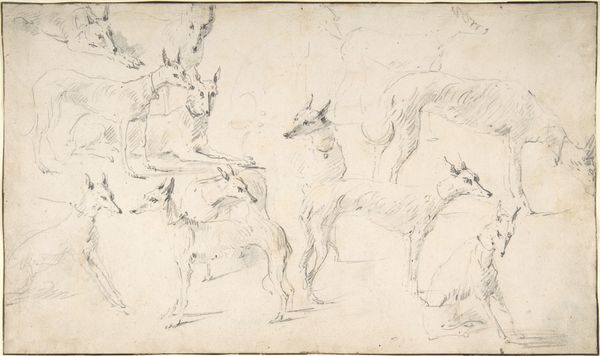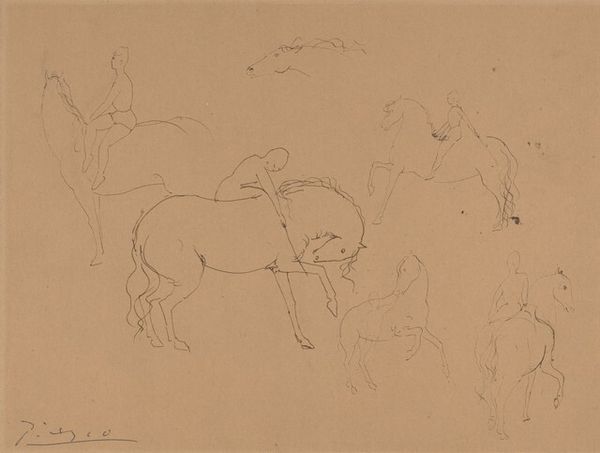
Ruiter en honden naar Adriaen van de Velde en Jacob van Ruysdael 1840 - 1846
0:00
0:00
johannestavenraat
Rijksmuseum
drawing, pencil
#
drawing
#
animal
#
pen sketch
#
pencil sketch
#
dog
#
landscape
#
personal sketchbook
#
romanticism
#
pencil
#
sketchbook drawing
#
academic-art
#
sketchbook art
Copyright: Rijks Museum: Open Domain
Curator: This pencil drawing, “Ruiter en honden naar Adriaen van de Velde en Jacob van Ruysdael”, by Johannes Tavenraat, was created between 1840 and 1846. What strikes you first about this work? Editor: The sketch-like quality immediately draws my attention. The artist seems to have captured a fleeting moment, a brief encounter. Curator: Absolutely, Tavenraat's academic style highlights a specific practice – the creation of studies and copies of existing works to improve skills in workshops. The presence of annotations suggests that the image served as a resource. Editor: It makes me wonder about the choice of imagery here, beyond skill-building. The central figure, a horseman with a hunting bird, evokes a sense of aristocracy and perhaps a lost, idealized past, as we often see during Romanticism. The dogs contribute to the image as symbols of fidelity. Curator: Yes, we must think about consumption patterns: Who would request copies after Adriaen van de Velde, to adorn which space and serve what societal need? The drawing offers information about class, societal taste, but also about the labor involved in the workshop’s drawing process. Editor: The repeated dog figures are quite fascinating. It’s as if Tavenraat is experimenting with their poses and movement, capturing different aspects of their animal nature in his sketch, and, consequently, how dogs relate to men in visual arts. Curator: And we cannot forget to examine Tavenraat's own materials – the type of pencil, the paper, how readily available and expensive these materials would have been, as well as how easy this sketch was to reproduce. These practical elements really informed the possibilities open to a 19th-century artist working in his milieu. Editor: Considering its function as a sketch, it offers some insight into the values attached to particular artistic representations at the time. We see, embodied here, ideas around wealth, fidelity, and idealized historical themes, revealing a fascinating web of meaning embedded within a seemingly simple practice piece. Curator: Precisely. Looking at this drawing reminds me that we must never neglect the mundane aspects of materials when unraveling art history, which otherwise would be romanticized.
Comments
No comments
Be the first to comment and join the conversation on the ultimate creative platform.
